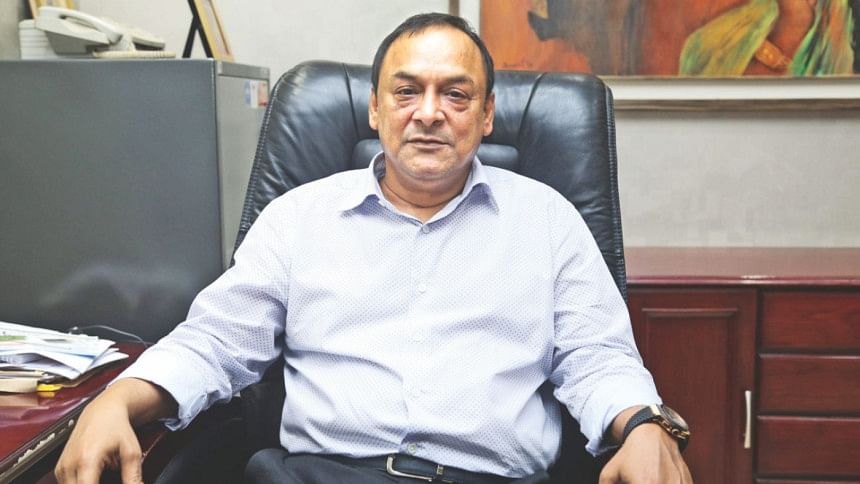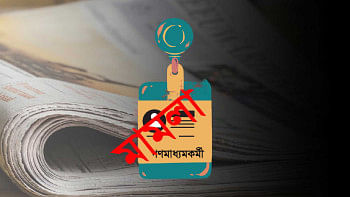Jarwa House grows on innovations

Not many businesses in Bangladesh have survived for four generations.
But Jarwa House, the country’s oldest jewellery store, has been a household name among the affluent for the last 116 years, growing from strength to strength, thanks to its high-quality and diversified products.
Badal Roy, managing director of Jarwa House, said the brand has always strived to introduce women to the latest trends in jewellery.
“Both in terms of design or store layout, Jarwa House has always tried to be fashion-forward.”
Badal represents the third generation of a family business whose roots date back to 1900; his grandfather Nittaya Gopal Roy first began work as a jeweller at home in Wari, Dhaka.
Badal’s uncle KC Roy and father SC Roy grew the business by establishing a shop and a factory at their ancestral home.
KC Roy managed client relations and specialised in selling to the rich buyers, while SC Roy looked after design and manufacturing. The business survived the 1947 partition of the British Indian empire and kept growing since.
Among a few jewellers around East and West Pakistan, SC Roy gained recognition for his ability to craft the finest gold settings and had clients from all across Pakistan coming in.
His wife, Lilaboti Roy, was the only woman at that time in East and West Pakistan who was well-known for her flawless and perfect work with real pearls.
Together, her work on jarwa sets and SC Roy’s unmatched ability in jewellery settings helped them garner more clientele every day and everyone began recognising them as Jarwa House.
In the 1960s, the number of clients was small. The business was largely family-oriented and they provided home delivery services.
The business enjoyed some monopoly in the jewellery setting segment, but after the independence of Bangladesh in 1971, the business was reregistered as New Jarwa House and reached new heights.
Badal entered the business in 1978 and took over manufacturing and quality control.
Many of their clients who used to buy ornaments from Jarwa House before 1971 have still maintained their loyalty.
Badal’s son Avi Roy, who is also a director of the company, said a customer came to the store a few days ago with a memo dated back to 1965.
Badal now designs products with his son, and daughter Anindita Roy.
The number of clients is increasing in line with people’s growing purchasing capacity, he added.
“As a result, the business is growing like many other sectors of the economy.”
Fifty years ago, people used to consider jewellery as assets and purchased ornaments for major social events, such as a wedding.
“But things have changed now. People buy jewellery on various occasions, such as weddings, birthdays, anniversaries and other social events.”
Badal said the business of Jarwa House is growing steadily, like that of other jewellers in the country. Jewellery made in Bangladesh can compete with those made in other countries in terms of quality and design, he added.
The 61-year-old businessman is now grooming his son and daughter in the trade, so they can take over.
Avi, 31, attended a two-year course on gemology in Canada and has already started to understand the nitty-gritty aspects of the business.
He oversees the production side, while Anindita, 26, looks after marketing.
Badal said the government can look at ways to reduce the value added tax on jewellery from 5 percent at present, to boost local sales.
The VAT on jewellery in many countries in South Asia is below 5 percent, and as a result, they can easily attract Bangladeshi customers.
A number of companies have set up jewellery stores in recent years, making huge investments in the sector, he said.
The government should extend more support to the sector as it employs a large number of people, he added.
There are 700 enlisted jewellers under the Bangladesh Jewellery Association. There are an additional 7,000 jewellers that are not the members of the association.
The sector’s annual turnover would be no less than Tk 700 crore, according to Badal.
The prices of jewellery are a bit higher in Bangladesh as jewellers cannot import the precious metal. An individual can import 100 grams of gold at a time. The jewellery sector here mainly runs on recycling.
The country also does not officially export gold items although there is demand among non-resident Bangladeshis.
A training institute should be set up for the jewellery artisans, said Badal. There are about 80,000 artisans across the country.
Apart from its flagship store at Molly Capita Centre in Gulshan, Jarwa House has a store at Radisson Blu Chittagong Bay View.
Badal plans to open a branch in Dhanmondi within a couple of years.

 For all latest news, follow The Daily Star's Google News channel.
For all latest news, follow The Daily Star's Google News channel. 



Comments